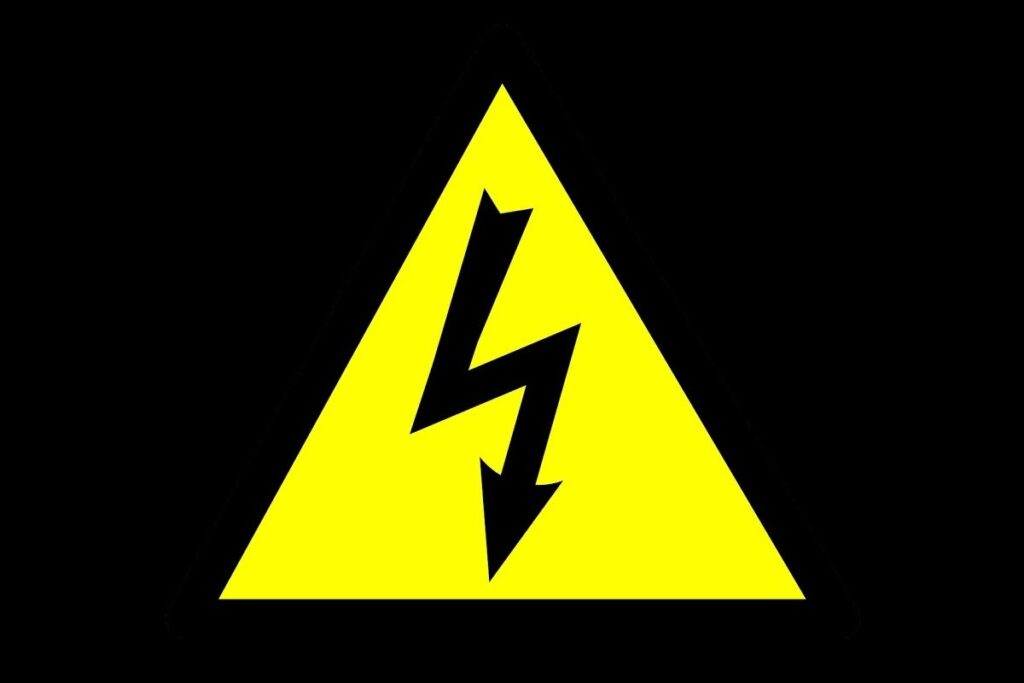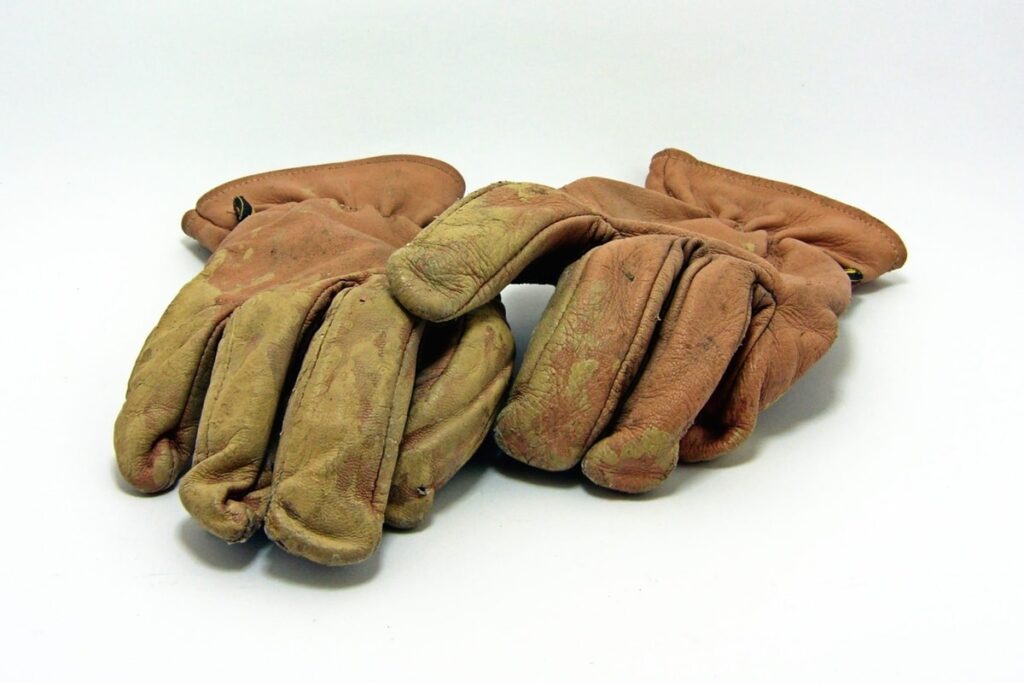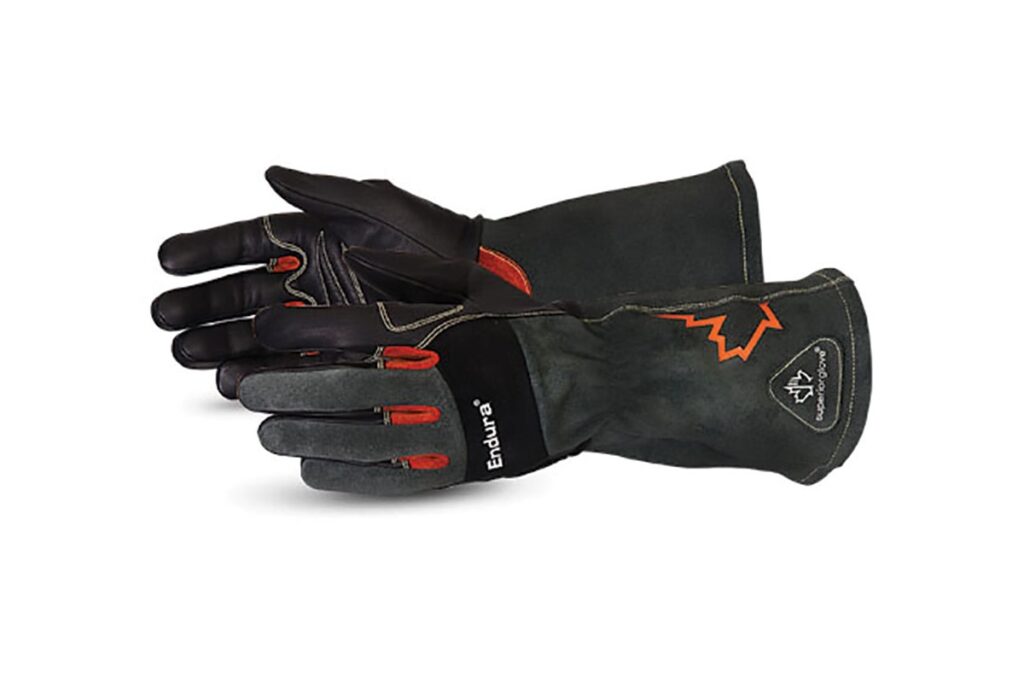When you’re learning how to weld for beginners, it’s easy to get excited about your newfound hobby.

After all, there are so many benefits to having this skill—saving some cash on repairs or even making extra money on the side—but one thing you should know before taking up any new trade is the hazards involved with working around tungsten inert gas (TIG) welders.
If you don’t take precautions when operating a TIG welder, you could be shocked yourself! Pun intended. In short, if used incorrectly or without protection, a TIG welder will shock anyone who comes into contact with its high voltage output.
This article explains what goes wrong during a shocking incident and provides tips on preventing such accidents from happening. Let’s start by talking about why these types of injuries occur in the first place.
Now, let’s jump into it!
Why Does My TIG Welder Shock Me?
As mentioned above, a major reason people end up being injured while using a TIG welder is due to the operators’ lack of understanding as well as their failure to protect themselves properly.
Your TIG welder shocks you because electricity takes the easiest route. So, verify that the ground clamp is properly positioned and has good contact with the surface and that your welding equipment is in proper working order.
The following points discuss some common mistakes made by inexperienced users of TIG welders and explain how they affect a person getting shocked.
What Causes TIG Welding Shocks?
First off, let’s talk about where TIG welds come from. A TIG welder uses an electrical arc between two pieces of metal called electrodes. One of the electrodes contains argon gas, which helps create the electric spark needed to do the work.
When the operator holds the gun too close to the ground, the electricity creates an intense amount of heat at the tip of the electrode rod. Eventually, the electrode becomes hot enough to cause the surrounding air molecules to break apart and ionize.
Ionized atoms have electrons moving freely around the atom nucleus. These free-moving electrons become charged particles known as ions.
In other words, because of the high temperatures created by the TIG process, free electrons build up near the positive pole of the electrode and begin traveling toward the negative pole via a path through the atmosphere.
As soon as they reach the negative terminal, they collide with nitrogen molecules, causing them to release energy in the form of photons, also known as light.
Now that our basic explanation of the TIG process is out of the way, let’s talk about how someone gets shocked.
What Happens When a TIG Welder Shocks You
It happens like this: Someone touches either the negatively charged part of the electrode (negative polarity) or the positively charged portion of the electrode itself (positive polarity).
Because both parts of the electrode carry a charge, touching them together causes current to flow between them. Since the current flows towards a grounded object, it ends up going through the victim instead.
This means that the human body acts as a conductor, allowing power to pass right through him or her. Once inside the body, the electricity travels down specific nerves, leading to the heart and then throughout the rest of the body until it reaches every cell.
Now imagine the entire time that electricity was passing through someone. He or she wasn’t aware of anything because the shock only lasts milliseconds. That’s essentially what happens when someone receives a “shocker.”
These kinds of incidents happen most often among those who use TIG guns without knowing how dangerous they really are. Take note of the next few points regarding TIG welder safety precautions.
How to Prevent a TIG Welder From Shocking You
Because the TIG welder generates extremely powerful sparks, it requires special attention to be handled safely. For example, whenever possible, avoid holding the gun directly over a concrete floor—especially if you live in a house.
Also, make sure that no kids are anywhere nearby. Finally, never point the nozzle of the TIG gun upwards, as doing so puts unnecessary stress on the machine.
Store the TIG Welder in a Safe Place
If you keep your TIG welder away from water sources, it won’t electrocute anybody accidentally. However, there may still be instances where your TIG gun falls into wet areas.
Even though it has been designed specifically to withstand exposure to moisture, you shouldn’t count on your TIG welder to remain dry forever. Therefore, keeping your device protected against water damage is important.
One great way to store your TIG welder is to put it in a plastic case filled with sand. To ensure stability, fill the container halfway full with gravel rather than loose soil. Then simply insert the electrodes into the sand and cover the top of the box with tape. Make sure to leave room enough space for the switch assembly.
Do Not Touch the Electrode
The best idea would be to steer clear of touching the actual electrode rod itself. Instead, always hold onto something else that isn’t conducting electricity, such as a nonconductive glove. Don’t worry, there are plenty of protective products available nowadays to help keep you insulated from danger.
Get Safety Welding equipment
For maximum safety, wear long sleeves covering everything except your hands. Furthermore, try putting on gloves and goggles as well.
While you might think that it doesn’t matter whether you are actually exposed to the direct source of the electricity, remember that electricity does conduct through clothing. So just assume that you’ll eventually receive a shock unless you take measures to prevent it.
Ensure the Workspace is Safe
Even though you aren’t physically handling the actual rods, you need to pay attention to the environment around the area where you plan to operate your TIG welder.
Ensure that there are no flammable materials within three feet of the gun. Also, consider removing small objects that could fall into the open housing since they pose potential threats.
Why Is My TIG Welder Not Working Properly?
With the exception of faulty wiring, a number of things can go wrong with your TIG welder aside from overheating. Here are several examples of problems that can develop:
There are numerous ways to solve issues related to your TIG welder, depending on the model. Consult your user manual to learn how to change different accessories and adjust settings.
Additionally, check online resources to find solutions for your particular situation. By paying attention to simple details, you can ensure better performance and reduce the chance of injury.
Using Protective Equipment to Prevent Electrocution
Wearing the appropriate personal protective equipment is essential for just about every weld.
Welding Head Gear and Clothing
While most welders do wear welding helmets or shields, there are some more inventive options available for protective apparel. A long-sleeve work shirt is advised despite the possibility of heat.
Your bare arms coming into contact with the metal bench, for example, can establish a circuit where you are the electrodes’ quickest path to the ground.
In addition to the various health and safety risks, you will be exposed to, especially while working on a challenging weld for a while and the perspiration starts to appear.
Significantly less conductivity will exist with long sleeves. To keep the conductivity theory simple, just assume that no one would ever employ fabric fibers for telephone cables.
Welding Gloving
The welding gloves are another item of personal protective equipment that could be abandoned in favor of comfort. It can be difficult to feed the welding wire, particularly with TIG welding.
However, nothing can match practicing that delicate feeding technique while wearing gloves. Gloves shield you from electric shocks in addition to the heat. There is high resistance to electricity due to the leather or textile’s extremely low conductivity coefficient.
Consider buying some more flexible gloves if your existing ones are too stiff and are making it tough for you to properly feed the wire. Remember that welding gloves might get wet as well.
The outcome is the same as the one related to moist hands previously indicated. Despite the fact that distilled water has low conductivity, salt or other compounds found in conventional tap water or sweat water greatly raise it. You should immediately stop welding while your gloves are wet and dry them right away!
What I Recommend
An epilogue to the subject. While taking care of new equipment for our welders, I had the chance to sample a range of welding gloves of various grades. My suggestion is to not skimp on gloves.
The tactile sensation is typically greatly diminished, particularly with most gloves priced at about $15. The delicate TIG procedure, however, depends on your fingertips’ tactile sense. In addition, less expensive gloves frequently do not bend adequately around the fingers.
Your welding results will greatly benefit from the use of well-fitting leather gloves. particularly if you’re just starting off or are a hobby welder. Additionally, less hand tiredness was experienced.
Safety Mat
A welding mat that insulates you. This should save you from getting shocked as you can’t join the electrical circuit. However, in some welding positions, a mat may not be required. Your safety shoes should already have this feature built-in.
Grounding a Work Bench With Clamps
A nice example of a workbench with clamps is one that is on a spotless surface. As important as wearing the appropriate safety apparel when welding is correctly grounding your workpiece.
The ground would be the target because, as previously said, lightning follows the route of least resistance. An easy channel for the electricity to travel from the torch through the workpiece to the ground is ensured by a clamp linked to the ground cable of your welding plant.
Make sure the clamp is positioned sufficiently close to the welding area. Metal is a good conductor, but the resistance rises as the distance traveled to the clamp increases.
As demonstrated in the example image, clamping on the side of the table may be adequate if you are welding on a table. Bringing the clamp closer to the workpiece or even attaching it to it may be beneficial when welding larger pieces or on a large workbench.
A Spotless Surface Is Considered Ideal for Welding
We stated how sweating makes your skin more conductive; the same is true when you look at it the other way around.
If there is grease, rust, paint, or anything else between the ground clamp and the worktop, you can become the easier alternative for electricity to flow through, even though grease normally protects you from this.
It might seem obvious, but it’s crucial to have a spotless surface to clamp on. The path of least resistance for electricity is only present when there is direct contact between the two metals.
Furthermore, during clamping, the surface area is crucial. All electrical current must pass through a metal drop if a weld drop is present between the clamp and the surface. Moreover, the weld drop can only flow through a small portion of the surface, which increases resistance.
Sometimes Replacing Faulty Components is the Only Solution
Although having your welding equipment in excellent working condition is desirable, in reality, tools are expensive, work must be done, or parts are not currently accessible.
However, if you see any obvious damage to your torch, your cabling, or any other component of the welding equipment, you should repair it right away because waiting will do more harm than good.
The torch is typically one of the first things to look at, particularly if your welder is giving you shocks. You will need to purchase new components if the torch has exterior cracks or other damage.
It is possible that the visible damage also resulted in intangible harm to the cables’ insulation. It is quite perilous to run the risk of short-circuiting with the TIG welding torch because it sends out a lot of currents.
The ground clamp cable, as well as any other cable connected to your welding plant, operates on the same principles. Replacement pieces are required if the cable has obvious damage or if the wire is exposed.
Welding Aluminum in AC
In contrast to other ferrous metals, aluminum is the only metal that has a natural protective oxide layer, which helps to break it up.
One of the adverse effects is utilizing a high frequency that travels through the body more readily. But if you adhere to the advice in the section on adequate grounding, this shouldn’t frequently happen.
The small electric shocks you were experiencing at your welding plant may have had a cause, and I hope this article has helped you identify it. I simply named a few typical causes, but there are many others as well.
You should be able to identify your specific source of welding shocks after roughly describing the fundamental causes of the shocking consequences.
The Bottom Line
Although rare, it’s possible to suffer serious harm while operating a TIG welder. As shown earlier, minor mishaps involving electric tools can easily turn deadly under certain circumstances.
Fortunately, modern technology allows us to design devices that minimize risks associated with traditional jobs. With proper care and maintenance, however, you can enjoy years of safe service from your TIG welder.
And if you’re ever in doubt regarding the health of your tool, consult a professional repairman.
Darell is a Certified Welding Engineer (CWEng) with over 23 years of expertise in TIG, MIG, MAG, dual flux, and stick welding. He is a senior welding engineer who has a desire to share his experience. Visit unwelded.com and join Darell as well as other welding enthusiasts in obtaining fabrication knowledge, amazing welding gadgets, and useful welding insights.



